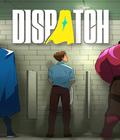It could be argued that the penguins stole the show in all three "Madagascar" movies. Just like the minions in Despicable Me, the four Antarctic penguins — Kowalski, Private, Rico and Skipper — were memorable, and they got a series on Nickelodeon due to their popularity. Over the Thanksgiving holiday, the "Penguins of Madagascar" movie was released, centering solely on their exploits. As seems to be the tradition, there's now a game based on that movie, and it's simply titled Penguins of Madagascar.
The game loosely follows the plot of the newly released movie. Back in the penguins' home base in Madagascar, the gang is celebrating Private's 10th birthday. To mark the occasion, they plan on going to Fort Knox to grab all of the Cheezy Dibbles from the facility's vending machines. Upon reaching the location, they find it's been overrun with octopus guards. They also find that their fellow penguins have been captured and trapped in the Cheezy Dibbles vending machines they're seeking out. Sensing something bigger is afoot, the gang travels the world to find out who's behind this.
As you would expect from a licensed kids title, this is a fairly typical platformer. You can select any of the four penguins at any time as they explore levels and double-jump. There are lots of puzzles to solve in the form of switches, and all four of the penguins can activate them or pull boxes to reach higher ledges. There are prerequisite collectibles in the field, such as Cheezy Dibbles bags, and there are special ones, like vending machines and the Cheezy Dibbles canister, though none have any purpose beyond being collected. Also, each penguin has a special move. Rico, for example, can blow up doors while Kowalski can travel short distances via flight, and Private can use the pneumatic tubes to travel to other areas in the level.
You wouldn't expect stealth elements in a game that's aimed at a younger audience. None of the penguins has the ability to attack anyone, except for Skipper, whose slap ability can stun enemies for a limited amount of time. Consequently, enemies won't attack you, but getting spotted causes a meter to appear. Filling it up means getting caught and being forced to restart the section. The approach calls for being sneaky over being aggressive, and that's not something you see in kids' games too often, if at all.
The approach is novel because it's a family-friendly game due to the lack of violence, and it also asks kids to try something a bit different from the norm. It isn't very hardcore on the stealth elements, but it's nice to see the developers go this route, ultimately making a game that sticks to the actions expected by these characters. With a good number of licensed games taking liberties with what characters can or can't do, this attempt at authenticity is rather nice.
Penguins of Madagascar is pretty much a direct port of the Wii and Wii U titles, which doesn't usually happen with licensed titles these days. Unfortunately, it can't be considered the best move for several reasons. The platforming is less precise in spots due to the size of the objects you're traversing. The most notable example is the candleholders you can jump on to reach otherwise inaccessible areas. While it can easily be done on the home console versions, their smaller size on the 3DS makes them almost impossible to land on.
The gameplay is a decent length, but the levels are large and have few checkpoints. This is perhaps the biggest fault against the game, as this design simply doesn't work as well on a portable device as it does on a Wii or Wii U. Long stretches between checkpoints means going through several puzzles before encountering a checkpoint. Dying from things like electric shock don't send you back that far, but getting caught by enemies will. If you wish to play the game again later, you're best served by putting the game to sleep because quitting to the title screen takes you all the way back to the beginning of the stage instead of your last checkpoint. On a portable game device, this is a design that fails to respect your time and makes the game tough to enjoy.
Even if the title made steps to rectify this, there would still be a few other things that dampen its entertainment value. A number of the puzzles are a little too easy due to several aids and design choices. Rico's bomb setup, for example, never goes beyond five button presses, and Kowalski's decryption process removes any sense of mystery. Also, your opposition never changes. From the beginning to the end, you face nothing but octopus guards and spotlights, and there's little variation in their appearance or actions. With no other foes or obstacles to face, these face-offs become mundane. Getting in their line of sight doesn't pose much of a challenge, either. With the exception of the high-level spotlights and octopi, you have to make a concentrated effort to get caught. Finally, there were a few instances where bad bugs appeared, including one where the rest of the world wasn't drawn, and the player had to reset the level to get the game world to appear. It happened early enough in the stage, so retracing steps wasn't a huge issue, but it was still an annoyance.
Graphically, the game looks quite good when you consider what the 3DS can do. The models are well detailed, and they animate rather nicely. The environments are large and distinctly different in each level. There are jaggies at every turn, which is acceptable given the hardware, and the overall game looks like the console version was scaled down but not too dramatically. What brings down the game is the frame rate, which is all over the place. Most of the time, the title runs at a good 30fps. Tighter shots give it a 60fps feel, but once the game pulls back to show more of the environment, it starts to chug noticeably. That frame rate drop is also pretty inconsistent, and while there are no areas where it adversely affects gameplay, it is annoying to see it happen so often.
On the other hand, the sound is in much rougher shape. The sound effects are minimal in that a number simply don't play, such as when a metal cage falls on your team. Some of the ones that do play, such as the active spray of a fountain or an explosion from a bomb blowing up a door, either sound distorted to the point of crackling speakers or muted. The only voices in the game are grunts from the penguins, and even those sound off. They sound more like voice samples of different grown men rather than the grunts of the titular penguins. About the only thing that works well is the musical score, which does a good job of evoking the spirit of a good spy caper at every turn.
Penguins of Madagascar is ambitious for a children's game but ultimately flawed. The idea for taking on a stealth and puzzle approach is a nice break from the expected action platformer, but neither of those elements feels inspired. The presentation feels like it was scaled back too much, even though parts of it look great on the portable. More importantly, the design feels like the wrong one for a portable gaming device. As it stands, it's a decent game, but it's much better suited for playing at home than while you're on the go.
Score: 5.5/10
More articles about Penguins Of Madagascar











 Based on DreamWorks Animation's motion picture Penguins Of Madagascar, this title lets players live the life of an elite penguin spy.
Based on DreamWorks Animation's motion picture Penguins Of Madagascar, this title lets players live the life of an elite penguin spy.




